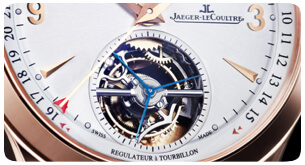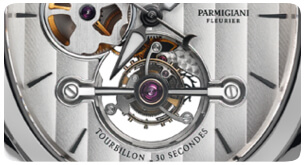Tourbillon
The “brain” of a mechanical watch resides in what is known as the escapement, which includes a delicate hairspring mounted on a balance wheel that rotates back and forth (each rotation equates to a tick on the watch). Due to the nature of the design and gravity effects of lighter or heavier spots in the balance wheel, the rate of timekeeping will vary when the watch is in different positions.
How a Tourbillon Works
In a standard mechanical watch, the escapement is fixed, and it is impossible to regulate it to keep the exact same rate no matter which position that watch is in (dial up, down, crown up, down, etc.). Enter the tourbillon. In a tourbillon, the entire escapement is housed in a rotating cage, and the whole assembly is constantly moving. That means no matter what position the watch is in, those timing variations are essentially canceled out.
A tourbillon is one of the pinnacles of horological achievement, and a truly impressive feat of engineering.

Master Tourbillon Dualtime by Jaeger LeCoultre




